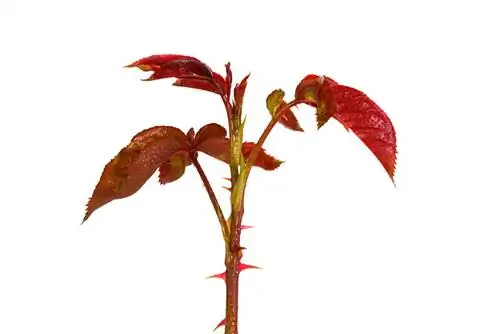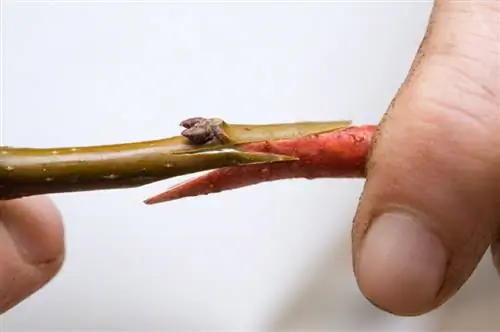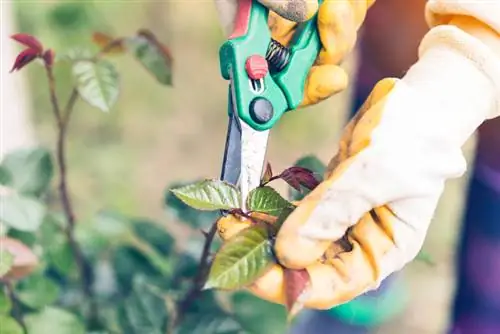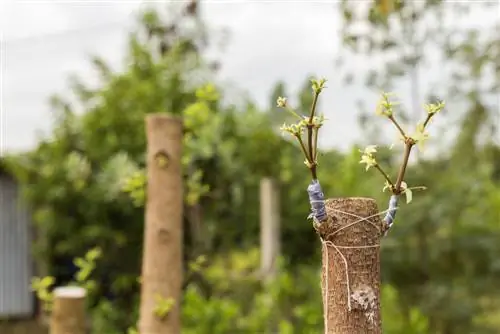- Author admin [email protected].
- Public 2023-12-16 16:46.
- Last modified 2025-06-01 06:02.
Noble roses bloom particularly beautifully, but often have less desirable characteristics. Their roots are weak, their growth is moderate and their susceptibility to diseases, frost and less than ideal location conditions is high. For this reason, such rose varieties are often grafted onto more robust wild roses, for which the so-called grafting method is usually used.

How and when do you properly inoculate roses?
Occulating roses takes place in summer, ideally in June. Eyes from a noble rose are grafted onto a robust wild rose. It is important to have clean and sharp tools and to work carefully to avoid infections.
Distribution of self-grafted roses is not permitted
Occulation is not only used to give noble roses more robust properties and to multiply them to the desired extent, but also when breeding new rose varieties. However, you should be aware that even grafted roses may not be passed on! Many varieties are protected by variety protection - similar to copyright - so that the breeding and distribution of these varieties remains the responsibility of the actual breeder. If you do not comply with this, you are committing a criminal offense and can be held responsible.
Be sure to use sharp and clean tools
In addition, refining is only successful if you not only work carefully, but also use clean and sharp tools - after all, you don't want to introduce any germs into the open wounds. This also includes only carrying out this work with clean hands or even with disposable gloves. It would also make sense to get a special inoculation knife (€15.00 at Amazon) for inoculating, at least if you want to do this more often. Otherwise, a razor blade can also help.
Occulating roses - This is how it’s done
Roses should be grafted in summer, with June being particularly suitable. Then the rose is in full sap and the chances that the two parts will grow together are particularly high.
- Choose a suitable, robust and he althy wild rose with strong roots. This is the pad.
- Cut them back heavily.
- Now cut a fresh branch from the rose to be propagated.
- This should have a faded flower and at least five leaves.
- Remove all leaves so that the base of the petiole remains.
- The flower and the spines should also be removed.
- The required eyes are located above the leaf stem base.
- First remove the green, thin skin above it
- and cut out one eye using an eyelet knife.
- Now clean the corresponding area on the base
- and make a T-shaped incision in the rose skin.
- Push the eye in there and cut off any protruding parts of the plant.
- Fix the area with raffia or with a special finishing rubber.
The grafted area should never be touched with your fingers to avoid introducing infections into the open wound.
Tip
As soon as the first shoots appear, pay attention to where they sprout: below the grafting point there are always shoots from the rootstock that need to be removed. A shoot of the graft should be cut back to three eyes so that the plant is encouraged to branch.






